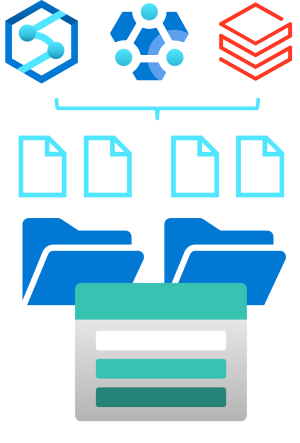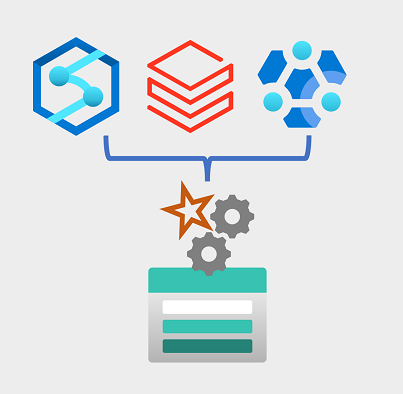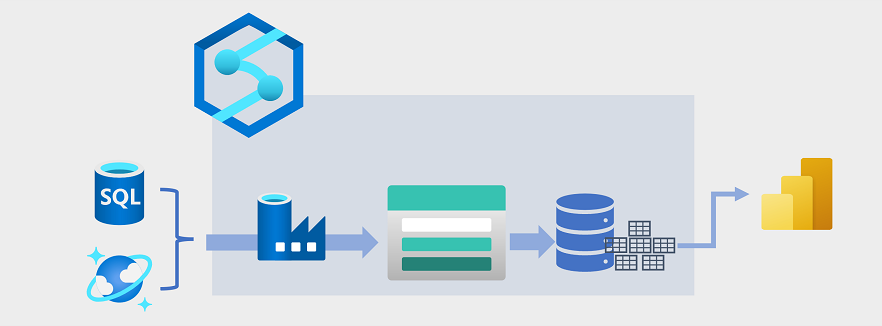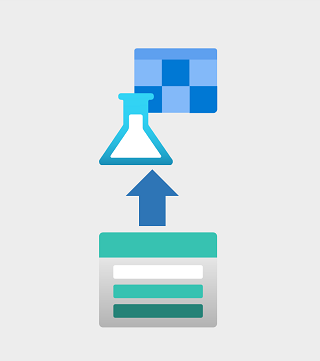A data lake provides file-based storage, usually in a distributed file system that supports high scalability for massive volumes of data. Organizations can store structured, semi-structured, and unstructured files in the data lake and then consume them from there in big data processing technologies, such as Apache Spark.
Azure Data Lake Storage Gen2 provides a cloud-based solution for data lake storage in Microsoft Azure, and underpins many large-scale analytics solutions built on Azure.
Azure Data Lake Storage Gen2
A data lake is a repository of data that is stored in its natural format, usually as blobs or files. Azure Data Lake Storage is a comprehensive, massively scalable, secure, and cost-effective data lake solution for high performance analytics built into Azure.

This integration enables analytics performance, the tiering and data lifecycle management capabilities of Blob storage, and the high-availability, security, and durability capabilities of Azure Storage.
Benefits
Hadoop compatible access
A benefit of Data Lake Storage is that you can treat the data as if it's stored in a Hadoop Distributed File System. With this feature, you can store the data in one place and access it through compute technologies including Azure Databricks, Azure HDInsight, and Azure Synapse Analytics without moving the data between environments.
Security
Data Lake Storage supports access control lists (ACLs) and Portable Operating System Interface (POSIX) permissions that don't inherit the permissions of the parent directory. In fact, you can set permissions at a directory level or file level for the data stored within the data lake, providing a much more secure storage system. This security is configurable through technologies such as Hive and Spark or utilities such as Azure Storage Explorer, which runs on Windows, macOS, and Linux. All data that is stored is encrypted at rest by using either Microsoft or customer-managed keys.
Performance
Azure Data Lake Storage organizes the stored data into a hierarchy of directories and subdirectories, much like a file system, for easier navigation. As a result, data processing requires less computational resources, reducing both the time and cost.
Data redundancy
Data Lake Storage takes advantage of the Azure Blob replication models that provide data redundancy in a single data center with locally redundant storage (LRS), or to a secondary region by using the Geo-redundant storage (GRS) option.
Enable Azure Data Lake Storage Gen2 in Azure Storage
Compare Azure Data Lake Store to Azure Blob storage
There are four stages for processing big data solutions that are common to all architectures:
- Ingest - The ingestion phase identifies the technology and processes that are used to acquire the source data. This data can come from files, logs, and other types of unstructured data that must be put into the data lake. The technology that is used will vary depending on the frequency that the data is transferred. For example, for batch movement of data, pipelines in Azure Synapse Analytics or Azure Data Factory may be the most appropriate technology to use. For real-time ingestion of data, Apache Kafka for HDInsight or Stream Analytics may be an appropriate choice.
- Store - The store phase identifies where the ingested data should be placed. Azure Data Lake Storage Gen2 provides a secure and scalable storage solution that is compatible with commonly used big data processing technologies.
- Prep and train - The prep and train phase identifies the technologies that are used to perform data preparation and model training and scoring for machine learning solutions. Common technologies that are used in this phase are Azure Synapse Analytics, Azure Databricks, Azure HDInsight, and Azure Machine Learning.
- Model and serve - Finally, the model and serve phase involves the technologies that will present the data to users. These technologies can include visualization tools such as Microsoft Power BI, or analytical data stores such as Azure Synapse Analytics. Often, a combination of multiple technologies will be used depending on the business requirements.
Azure Data Lake Storage Gen2 in data analytics workloads
Big data processing and analytics

Azure Data Lake Storage Gen 2 provides a scalable and secure distributed data store on which big data services such as Azure Synapse Analytics, Azure Databricks, and Azure HDInsight can apply data processing frameworks such as Apache Spark, Hive, and Hadoop. The distributed nature of the storage and the processing compute enables tasks to be performed in parallel, resulting in high-performance and scalability even when processing huge amounts of data.
Data warehousing

data is extracted from operational data stores, such as Azure SQL database or Azure Cosmos DB, and transformed into structures more suitable for analytical workloads. Often, the data is staged in a data lake in order to facilitate distributed processing before being loaded into a relational data warehouse. In some cases, the data warehouse uses external tables to define a relational metadata layer over files in the data lake and create a hybrid "data lakehouse" or "lake database" architecture. The data warehouse can then support analytical queries for reporting and visualization.
Real-time data analytics

Azure Stream Analytics enables you to create jobs that query and aggregate event data as it arrives, and write the results in an output sink. One such sink is Azure Data Lake Storage Gen2; from where the captured real-time data can be analyzed and visualized.
Data science and machine learning

Data science involves the statistical analysis of large volumes of data, often using tools such as Apache Spark and scripting languages such as Python. Azure Data Lake Storage Gen 2 provides a highly scalable cloud-based data store for the volumes of data required in data science workloads.